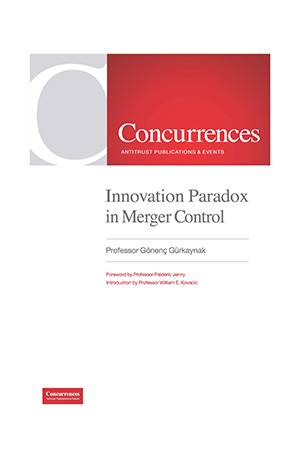Dr. Gönenç Gürkaynak
1st Edition, November 2023
In his new book, Professor Gönenç Gürkaynak dissects the complex relationship between competition and innovation, and attempts to optimize intervention in merger control, advocating for a case-by-case analysis under certain principles explored in the book. He powerfully challenges presumptions in merger control, based on his analysis of 80 merger control decisions in three major jurisdictions, and exhaustive research on academic literature.
Innovation Paradox in Merger Control, written by Dr. Gönenç Gürkaynak, was published by Concurrences on November 22, 2023.

